How Are Diamonds Made? Natural vs Lab-Created Explained
Two Paths, One Diamond Not all diamonds come from the same place — but they all start the same way. Pure carbon, crystalized under immense pressure and heat. Whether it…
Lab-Grown Diamonds – Basics
The phrase “a diamond is forever” has two meanings, connecting the promise of a future of “forever” with the billion-year past of diamonds. The coiners of that phrase probably never imagined someone proposing with a lab-grown diamond, potentially younger than the bride! Predictably, there is debate about the role lab-grown diamonds should play in gifting, as opposed to their natural counterparts.
Before going on: Check out the PriceScope Diamond Buying Guide
These pages may reference products from companies that help to support PriceScope.
Intermediate Lab-Grown Diamonds
Advanced Lab-Grown Diamonds
Here are some of the most frequently asked questions about lab-grown diamonds:
Yes. Lab-grown diamonds are real diamonds. They are not simulants like CZs or moissanites. Aside from subtle carbon distinctions, a lab-grown diamond is chemically identical to a natural diamond. The technical difference is that they are not billions of years old. They are grown in factories using sophisticated chemical synthesis over a period of 1-4 weeks. Once grown, they are polished with the same tools and brought to market in the same manner as natural earth mined diamonds.
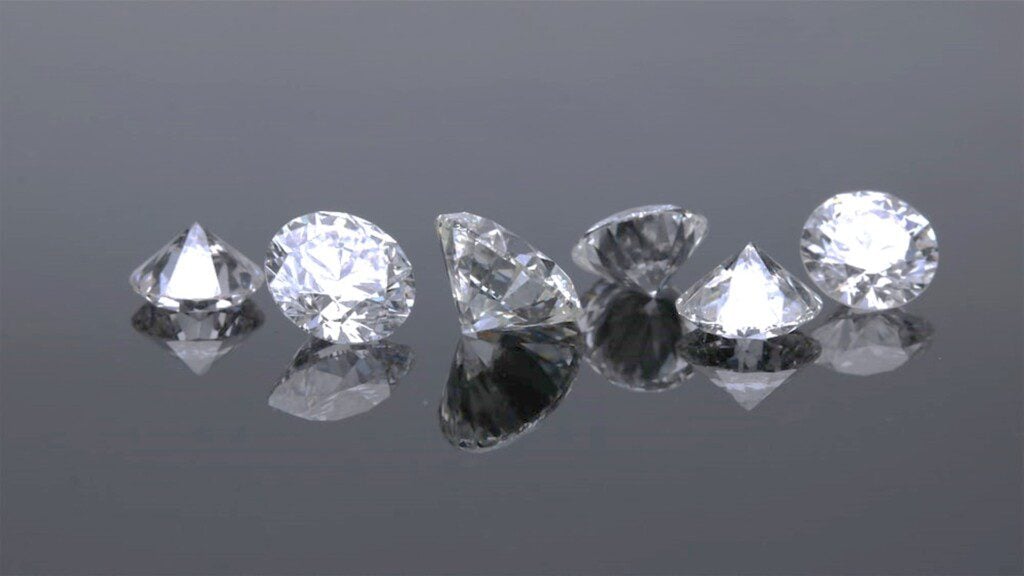
Shop Lab-Grown Diamonds: Some of our vetted vendors offer lab-grown diamonds – both loose or set in finished jewelry.
Check out Whiteflash and their precision cut lab grown diamonds, James Allen and Brilliant Earth’s extensive online collection.
Yes. Lab-grown diamonds are created through chemical synthesis. But while you may see the term “synthetic diamond” in science journals and research papers the diamond industry widely uses the term “lab-grown diamond” to avoid confusion.
Yes. They have an identical refractive index and optical qualities. They are graded using the same color and clarity scale as natural diamonds. However, cheaply produced lab-grown diamonds have a noticeable brown, grey, or pink undertone, and experienced gemologists and jewelers may also be able to identify inclusion types that point to the man-made origin.
Yes. Lab-grown diamonds trade for lower prices than comparable natural diamonds. The principle of accelerating change suggests they will continue becoming more cost-effective. There are also top-tier players like DeBeers – entering the market with disruptive pricing – with the potential to expand further into the lab-grown space. With that said, at some point producers are likely to stabilize pricing, much as miners and sightholders have done across the natural diamond industry.
One way to mitigate this is to find sellers with full credit upgrade policies. Under such a policy the full amount you pay remains available for you to apply again to a different diamond, apples to apples, for the duration of that policy. Terms vary. Some sellers want 2x the original spend to upgrade. Others will entertain an upgrade for any diamond that’s more expensive.
There are now lab-grown sellers offering like-kind upgrades, meaning – if you buy a 1.00 G VS2 ideal cut today – its future upgrade value will be whatever a 1.00 G VS2 ideal cut happens to be selling for on that future day you decide to upgrade.
In terms of value-outlook, the extended trade-in, upgrade, and buy-back guarantees offered by some sellers can be a significant value-add for those seeking to maximize the value of today’s purchase down the road.
Yes and no.
Are they conflict-free?
Yes. Lab-grown diamonds are reliably conflict-free. They are produced by fairly-paid workers in controlled factory conditions.

Some lab-grown diamond producers have sought to have their processes certified as responsibly produced and sustainable by independent third parties. While this is a positive initiative, intended to boost consumer confidence, the definition of “sustainability” is debatable.
The biggest challenge lab-grown diamond producers face is heavy energy use. At least one independent party approached for sustainability certification, SCS Global, has generally found that producing lab-grown diamonds requires more energy than mining them. While it is possible for a producer to refine their processes in order to become more sustainable and climate-neutral, it’s unlikely that the largest overseas factories will make that effort. Therefore, consumers seeking a truly planet-friendly lab-grown diamond will need to seek out the few producers making those efforts in their processes.
Ultimately, both lab-grown diamonds and natural diamonds have positive planetary value propositions. Despite enormous power consumption, lab-grown diamonds are produced in safe, controlled environments and require no intrusive mining. Alternately, ethically-mined, natural diamond sales sustain millions of indigenous people in the upstream diamond value chain, and fund education and infrastructure in some of the world’s poorest places.
Looking for a source for lab-grown diamonds?
Our trusted vendors offer a variety of options, including loose diamonds and finished jewelry. Some reputable retailers to check out include Whiteflash, James Allen and Brilliant Earth, who all have a wide selection of certified lab-grown diamonds available online.
analysisThere are two sophisticated methods of producing lab-grown diamonds. The most common is Chemical Vapor Deposition (CVD), where carbon atoms are released from plasma. The other method is High-Pressure High Temperature (HPHT), where mechanical presses and temperatures are used to replicate the conditions under which natural diamonds are formed.
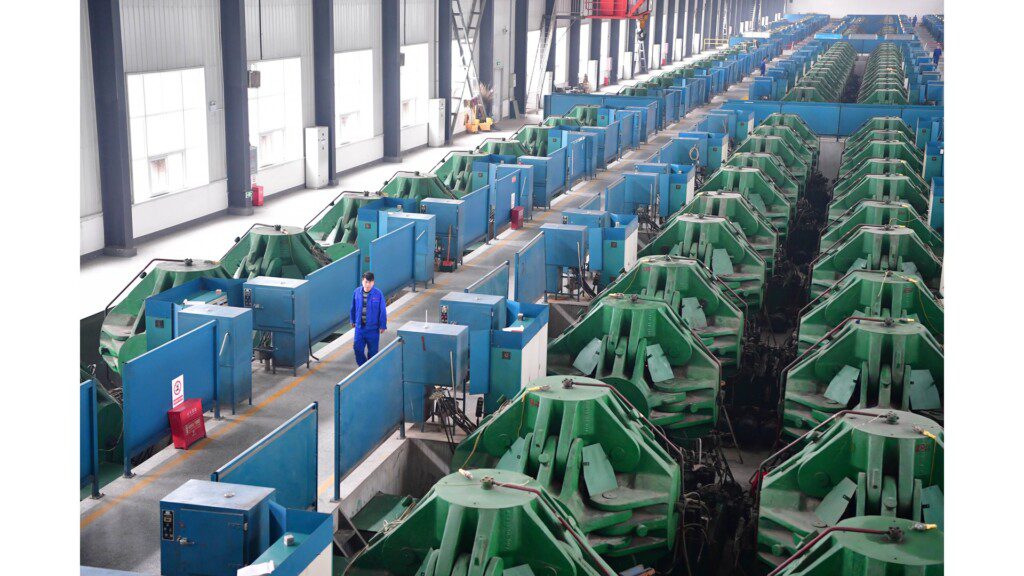
analysis-1 | hpht
High Pressure, High Temperature replicates the conditions under which natural diamonds are formed: around 100 miles below the earth’s surface a billion years ago as continental drift dragged landmasses across each other. This lab-grown diamond process employs anvils, heating, and pressure apparatus applying significant pressure and heat to a small cell over a period of days or weeks.
The HPHT lab-grown diamond process employs anvils, heating, and pressure apparatus applying significant pressure and heat to a small cell over a period of days or weeks.
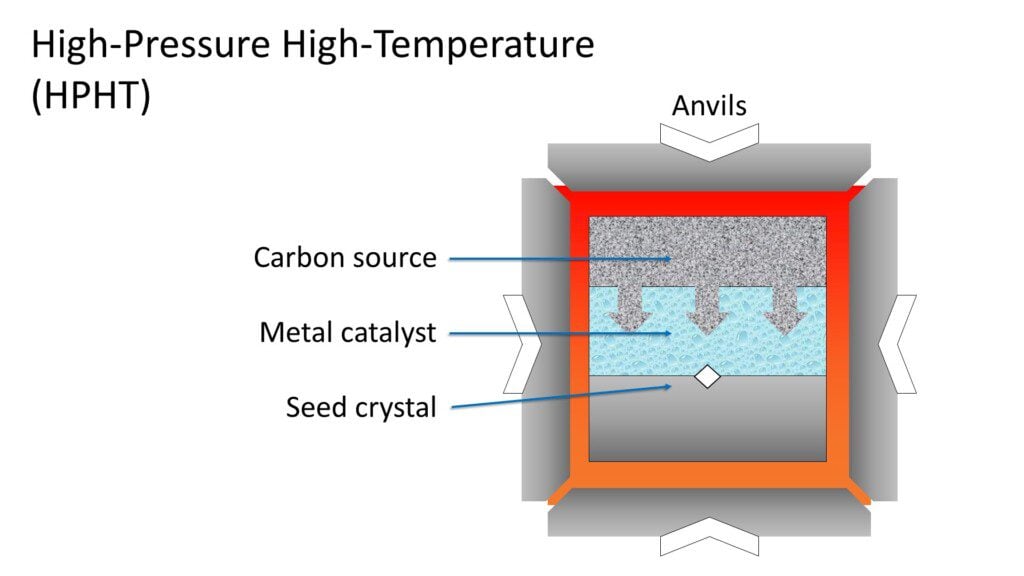
The small cell contains a seed crystal, a metal catalyst, and carbon powder. It will be heated to between 2,372 and 2,912 degrees Fahrenheit, or 1,300 and 1,600 degrees Celsius. Note that the top of the cell will be heated a small percentage hotter than the bottom. This causes melting to begin at the top of the cell first.
Anvils apply massive pressure from all sides (approaching 900,000 pounds per square inch). The HPHT process results in the liquification of the catalyst, which starts dissolving the carbon. That melted carbon moves from the higher temperature to the lower temperature, migrating through the flux to the diamond seed crystal. Upon reaching the cooler seed, the carbon material crystallizes on it and the seed stimulates the growth of a new lab-grown diamond.
analysis-2 | cvd
Chemical Vapor Deposition (CVD) occurs in a vacuum chamber. It begins with a flat substrate of diamond seed crystal. The chamber is depressurized and filled with hydrocarbon and hydrogen gases.
Microwaves are used to heat those gases until the electrons separate from their nuclei, forming plasma.
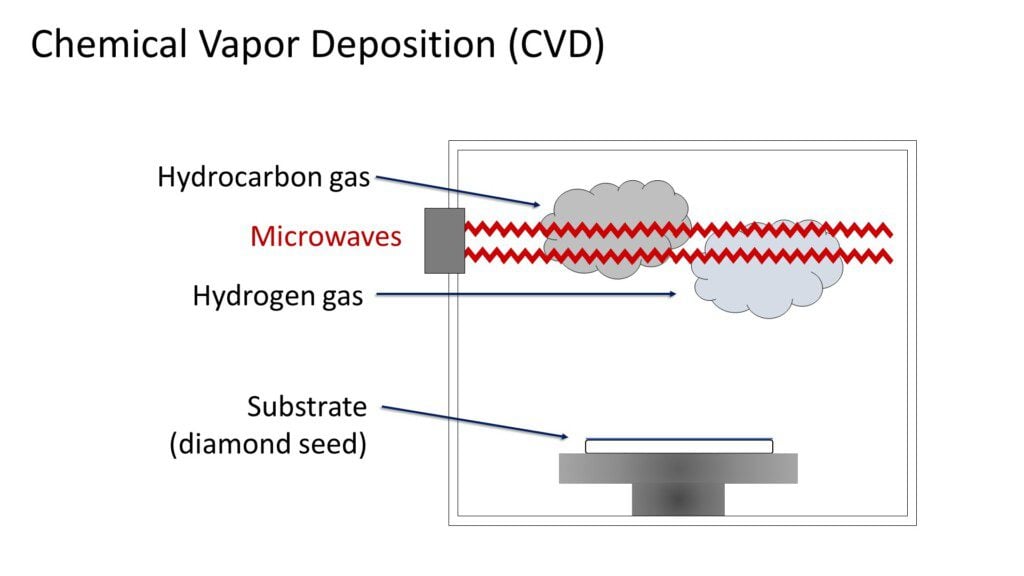
Hydrogen and carbon atoms precipitate from the superheated plasma cloud and rain down on the substrate. Under ordinary circumstances, this process would only grow graphite, but the hydrogen atoms etch the graphite away, permitting the carbon atoms to pair with the diamond substrate, crystallizing atom by atom, and growing upward vertically.
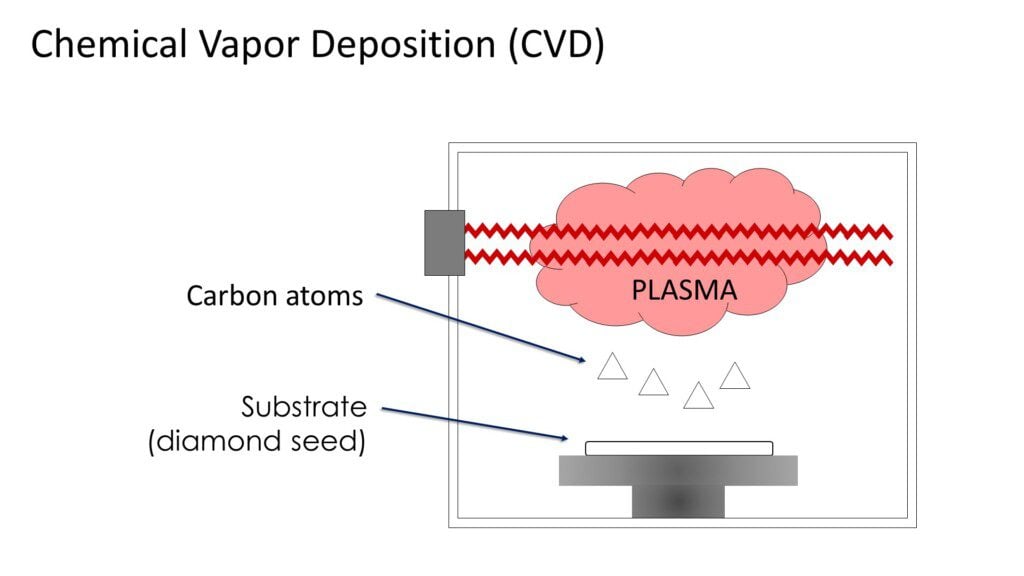
analysis-3 | morphology
While lab-grown diamonds are chemically identical to natural diamonds, the way they grow is physically different.
HPHT crystals have slightly different cubo-octahedral growth and CVD lab-grown diamond crystals have radically different vertical cubic growth.
analysis-4 | inclusions
As more and more lab-grown diamonds enter the market, produced at different quality control levels, experienced jewelers and gemologists are learning to recognize distinctive inclusions which are byproducts of synthesized growth.
One byproduct of the HPHT lab-grown diamond process is the possibility of metallic inclusions. As described above, a metallic catalyst is used to dissolve the carbon which migrates to the diamond seed. Logically, pieces of that metal catalyst that do not melt entirely can become trapped within the lab-grown diamond crystal.
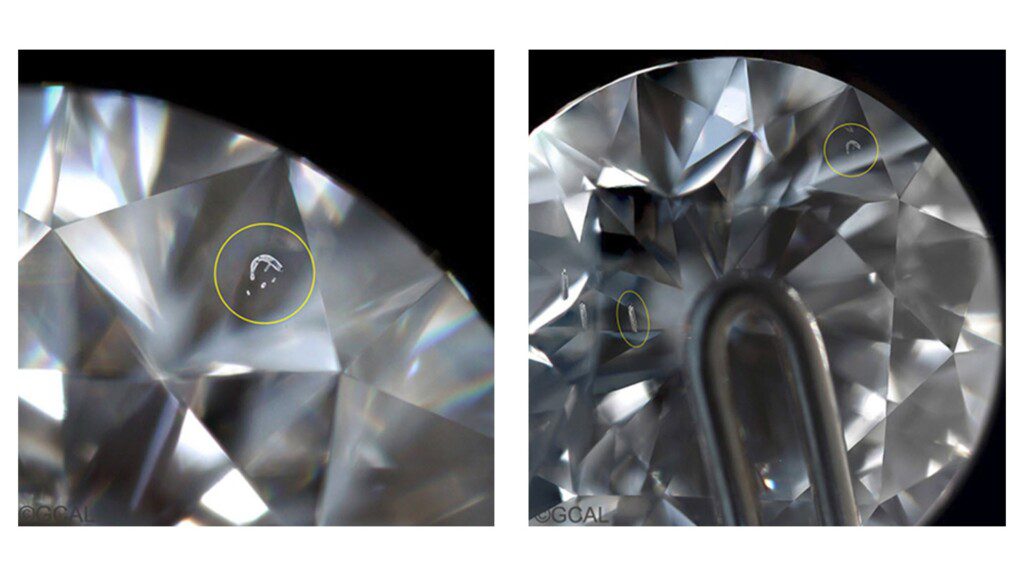
The most frequently seen characteristic in HPHT lab-grown diamonds is a dark, rod-shaped metallic inclusion. These flux inclusions can have a man-made appearance when seen under magnification, and can even be reflective, unlike any naturally occurring inclusion type.
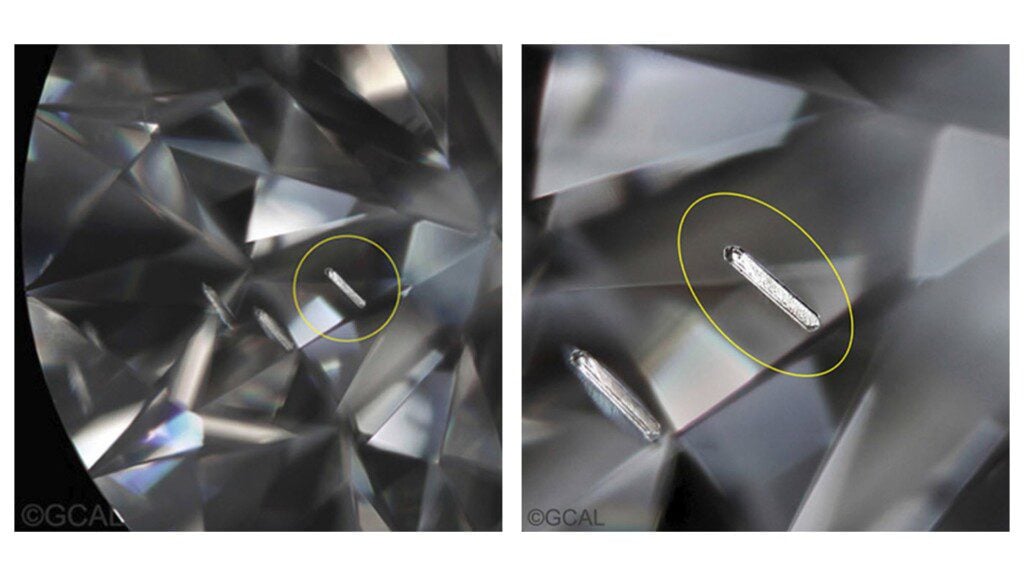
Remember, there is no pressure applied in the CVD process. Carbon rains down on the substrate, growing that crystal vertically in parallel layers. During the process, that crystal growth may undergo a series of stops and starts. In such cases, you may see graining within the lab-grown diamond which presents as extremely flat, since it took place on a single linear, horizontal plane.
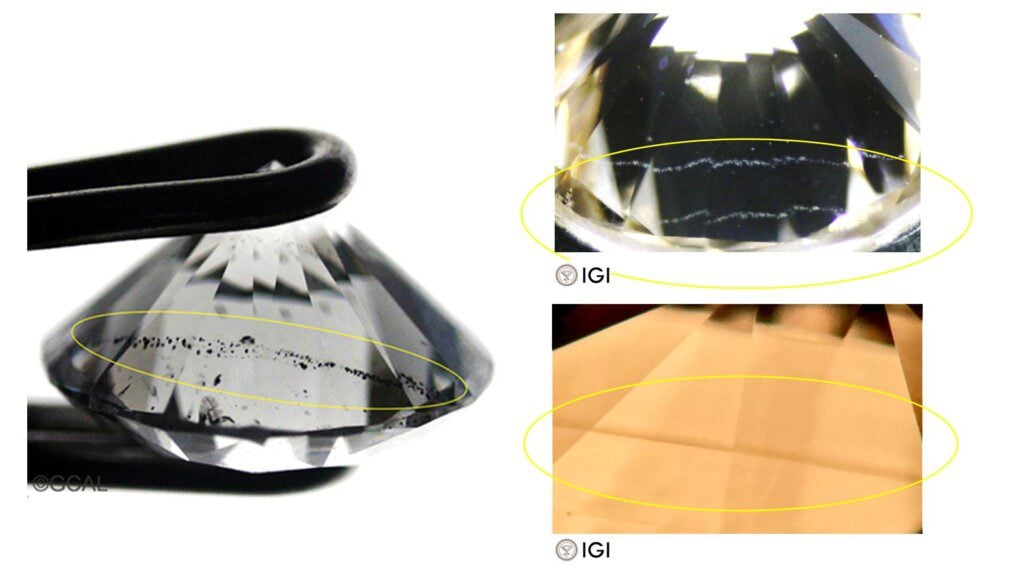
Another byproduct of vertical growth and a process that may have stops and starts or include contaminants are characteristics that become grouped together on a single linear plane within the finished crystal. Such structured planar inclusion groups rarely (possibly never) occur in natural gemstones.
Experienced diamond cutters, gemologists, and jewelers are improving in their ability to identify certain lab-grown diamonds with loupes and microscopes.
analysis-5 | quality
In the past several years, the rising visibility and popularity of lab-grown diamonds have created a “lab diamond rush.” As more and more growers enter the arena, lab-grown rough output has taken on more variability. This can be exaggerated by entities entering the field with fewer capital resources, lower quality equipment, presses converted from industrial to gem-quality use, contamination confounders, etc.
Turnaround choices also play a role. When a growth process is pushed to maximum speed, it increases the grower’s output, but also increases the likelihood of inclusion types that experienced gemologists can identify as distinctive to lab-grown diamonds.
The majority of CVD grown rough finishes with a brown undertone (at left, below). The high end of lab-grown quality continues to improve, however, and there are now CVD productions capable of producing near-colorless and colorless rough with no undertone (at right, below).
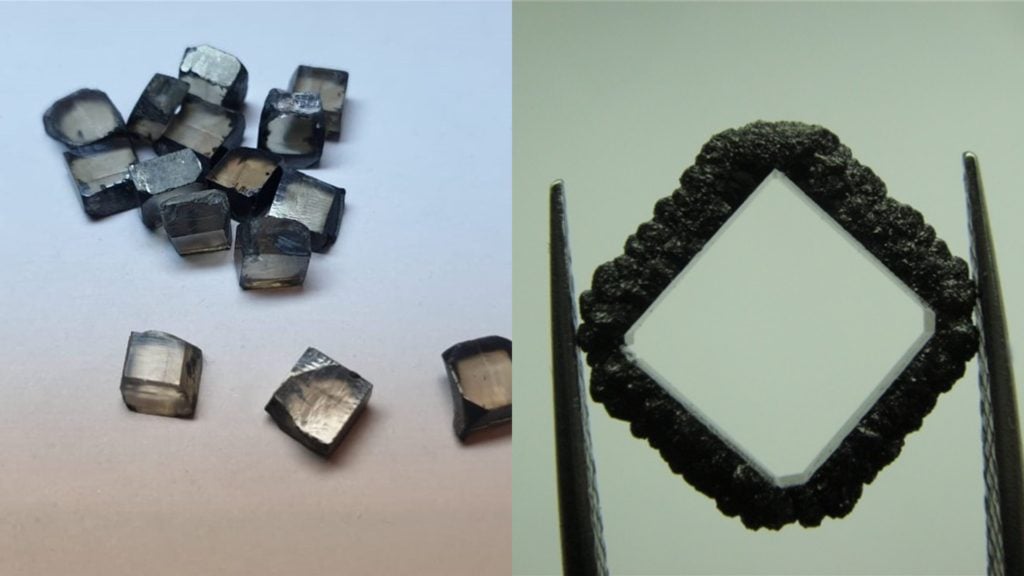
Producers frequently use post-growth treatments to bleach roughly with an undertone. Depending on output quality and the process used, it may be possible to reduce the brown, change it to a softer grey or pink or eliminate it entirely. This is a very common practice. As of 2021 more than half of the CVD diamonds graded by the IGI have had their color improved with post-growth treatments.
A grading report from a top-tier laboratory will tell you what method was used to produce the diamond, CVD, or HPHT, and whether post-growth treatments were used or not used. These details are not part of the traditional diamond Cs, but they are value factors and components that jewelers and educated diamond buyers may wish to consider.
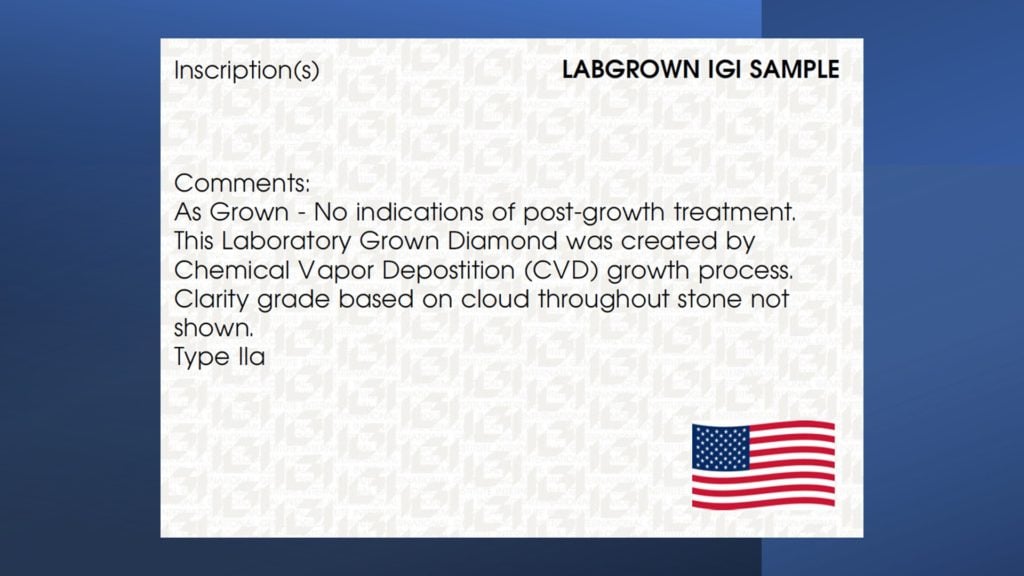
evaluation
Anything below can be overruled by personal taste and preference. There are no “wrong” beliefs when it comes to symbolism, whether it involves diamonds, gemstones, or even holiday destinations, but when it comes to making your decision, we hope the information below will be useful.
The Yes Position: How wonderful that humans can now command the science and technology required to create the hardest known material in the universe. It may come as no surprise that Silicon Valley is the epicenter of many USA lab-grown diamond sales.
The No Position: How can someone assign emotional value to something that was grown in a factory last month, is printed like paper, and is doomed to cost less over time? In comparison, a gift of plastic flowers is not generally as appealing as flowers that Nature grew herself.
Factually: Lab-grown diamonds are here to stay. Both natural and lab-grown diamonds have a legitimate place in the market.
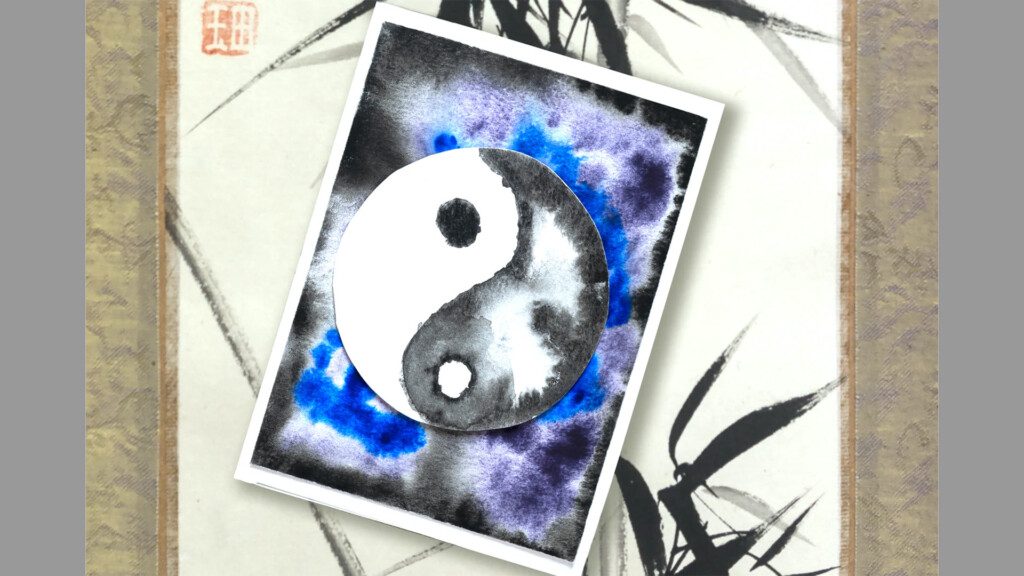
The Middle Ground: Many people feel free to pursue natural diamonds for life’s most significant and meaningful moments, while enjoying the lower price-point of lab-grown diamonds for everyday accessorizing, gifting, and commemorating smaller occasions.
If you're in the market for lab-grown diamonds, consider checking out the offerings from our vetted vendors.
A few reputable retailers to consider include Whiteflash, James Allen and Brilliant Earth, all of which have a comprehensive online collection of certified lab-grown diamonds.
evaluation-2 | future
The Future of Lab-Grown Diamonds
Prior to the 2000s “industrial diamonds” used to imply drill bits, machines, and cutting tools – but technology has come a long way in a short time.
While lab-grown diamonds have become more and more visible in the jewelry industry the endgame for certain synthetic diamond producers was never jewelry applications. Our shiny world is just a convenient means to another end.

Today’s industrial diamonds include type IIa flawless plates, anvils, and lenses at quality levels that exceed what’s used in jewelry. The most innovative and aggressive lab-grown diamond producers have goals focused on technological, medical, and even military applications.

In December 2019, Jason Payne, the CEO of Silicon Valley’s Ada Diamonds told Forbes Magazine:
“If you grow diamonds, you don’t cut your truly flawless diamonds into shiny baubles, because you can make far more money selling laser lenses or surgical scalpels.”
25% of lab-grown diamond output already goes toward electronics. Its chemical stability, conductivity, and thermal shock resistance create high demand in the electrochemical sectors of industry as a semiconductor component and make it a key element for diodes, transistors, and sensors. In fact, whatever device you’re using to read this article would not exist without lab-grown diamonds.
In medical applications, nanoscale and microscale lab-grown diamonds are replacing superconducting magnets in MRI and NMR systems, along with other medical equipment. The low friction, durability, and biological inertness of a lab-grown diamond also make it ideal for joint replacements. Lab-grown diamond spinal disk replacements have been undergoing clinical trials in the EU for some years now.
Diamond lenses are able to stand up to extreme environments. Lenses cut and polished from type IIa HPHT crystals are useful in spectroscopy and technologies spanning the infrared, ultraviolet, visible, and X-ray ranges. The hardness and stability of diamonds allow them to function with extremely high thermal and radiation loads with a low coefficient for linear expansion.
And then we have this awesome “Star Trek” quantum entanglement stuff.
evaluation-3 | quantum
In June 2019, researchers from Yokohama National University managed to teleport quantum information securely within the confines of a diamond.
The science-fiction version of “teleportation” typically involves taking an object and “beaming it” across a distance so it shows up in another place. Quantum teleportation is a little different as it involves taking information from one place and recreating it in another through quantum entanglement.
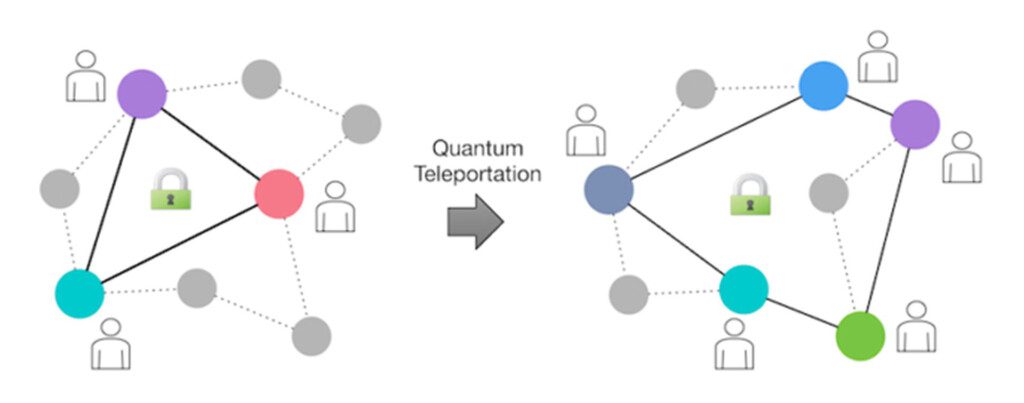
The scientists at Yokohama National University used micro and radio waves to entangle two particles in diamonds at the quantum level. The result of this entanglement is that any influence on one particle instantaneously steers its entangled twin into an identical corresponding state, no matter where it is. The keywords there are instantaneously and no matter where it is.
That means no time delay between action on one system and reaction from its entangled twin.
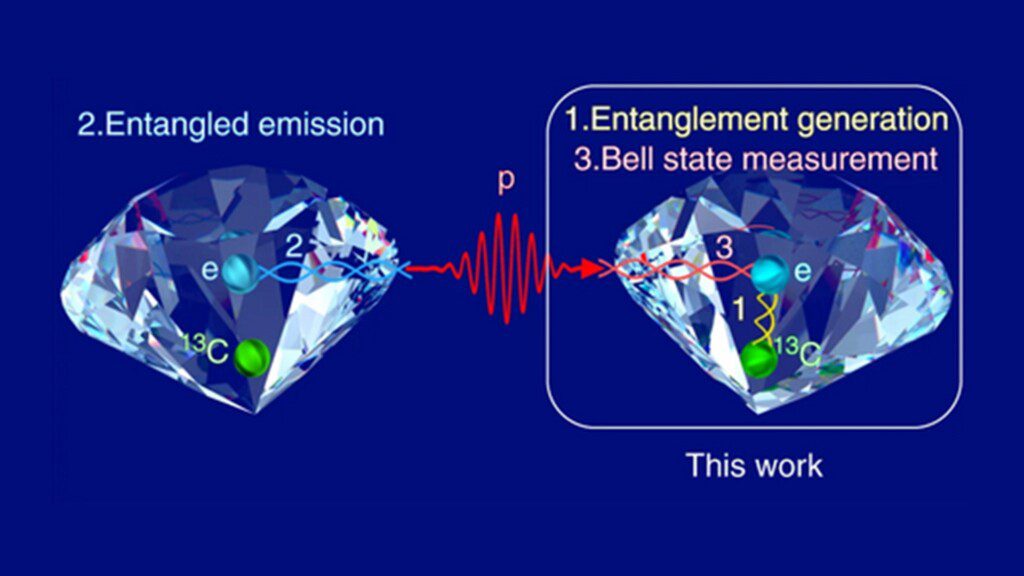
Looking to the future, one could imagine quantum entangled mobile phones. As you type a message on one device, the identical message would appear instantaneously on another Even across a distance of thousands of light-years! Successful quantum entanglement and non-locality in lab-grown diamonds also give us a theoretical basis for actualizing science fiction concepts like subspace communications, transporters, and exploring the quantum realm.
These fundamentals also suggest the possibility of coded military communications at a transcendent level – with no possibility of interception or distance restriction – on planet earth or beyond.
In summary: As we watch lab-grown diamonds gain market share in the jewelry world, be aware that the endgame for the most advanced producers is to land billion or trillion-dollar contracts with the likes of Apple, Pfizer, Raytheon, or possibly local governments or entire nations.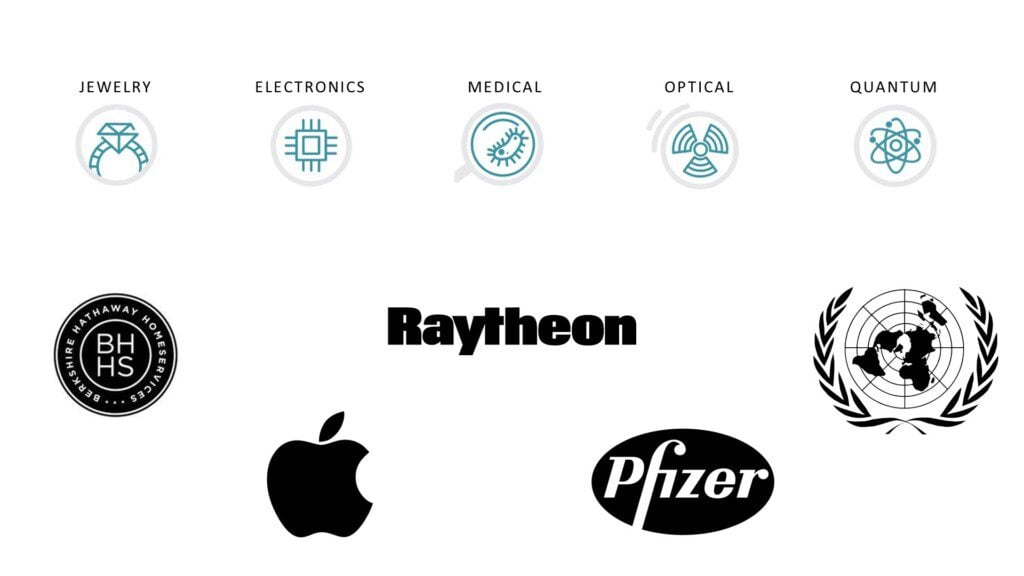
Get answers to lab-grown diamond questions: Ask our community of unbiased independent helpers.
Ready to find your diamond?

Retail Diamond Prices Chart Updated Monthly.

Two Paths, One Diamond Not all diamonds come from the same place — but they all start the same way. Pure carbon, crystalized under immense pressure and heat. Whether it…
A Wedding Ring as Unique as Your Love Finding the right wedding ring isn’t just about diamonds or gold – it’s about finding the one that feels right. With hundreds…
So, you’re thinking about lab-grown diamonds? Smart move. They’re just as sparkly as the natural kind but usually cost less. But where do you actually go to buy them? It…

Want to stay updated on the most recent blogs, forum posts, and educational articles? Sign up for Bling News, PriceScope’s weekly newsletter.